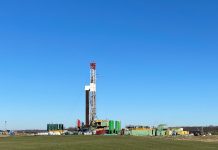LEXINGTON, Ky. — Like the rest of the economy, producers in the agricultural sector are feeling the crunch with cattle prices down and operating costs up.
“I’m not an economist, but it’s pretty clear to me that if you want to improve the bottom line, you have to reduce costs or increase income — or both,” said Darrh Bullock, University of Kentucky extension beef cattle specialist.
A lot of times when cattle producers experience difficult economic times, one of the first areas they look to reduce costs is bull purchases, Bullock said. But that may not be wise.
“I’m all for commercial beef producers buying a bull that fits their budget,” he said. “But, you need to be careful that buying a cheap bull now won’t cost you dearly in the future.”
What’s your goal?
Bullock said producers can avoid costly decisions if they go through the proper steps to purchase a bull that fits both their budgets and their management and production needs.
One of the first things a producer should consider when purchasing a bull is calving difficulty. Bullock emphasized the importance of finding a bull that meets calving ease needs to save on veterinarian bills and other associated costs.
He said producers can also impact their future feed costs by selecting the right genetic match for the environment and management flow of their operations.
(Click here for the University’s 2007 fact sheet on Beef Sire Selection for Cattle Genetic Improvement Program, a .pdf.)
“If you have minimal forage quality and/or quantity, the bull’s genetics for growth and milk should reflect that if you plan to keep replacement heifers,” Bullock said.
“If you keep heifers that have high genetic potential for growth and milk, they will demand more feed to remain reproductive.”
If producers can’t meet that demand through forages, they may have to supplement with a large volume of costly purchased feeds to get them bred.
Weight-conscious
Bullock said that often producers will first try to increase income by increasing the weight of their calves. Weight is important, however, it’s the total weight of calves coming off the farm that’s the main focus, not individual calf weights, he said.
“That could lead to an imbalanced situation of highly productive cows in a lowly productive environment and that will drive up costs, possibly more than the increased income,” he said.
“The best way to increase total pounds produced is through improved reproductive efficiency, and the best way to improve reproductive efficiency is to properly match your bull’s productivity to the production levels of your operation.”
Stick to your plan
The moral to this story, Bullock said, is that the best way to contain costs and to generate more income when selecting a bull is to find the right bull for your situation — and that might not be the same as your neighbors’, he added.
An operation with high production levels will benefit from a high-producing bull, but the same bull on a less-productive operation may cost the operator more money and income in the future.









